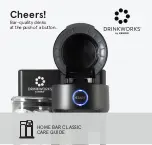
14
ZLS SERIES — FLOOR HEIGHT LIFT TABLES
ZLS Series Owner’s Manual
MAINTENANCE
All servicing should be done by qualified personnel.
Qualified personnel should be able to read and
understand wiring and hydraulic diagrams. They should
be able to troubleshoot live electrical circuits safely and
in accordance with accepted practice.
For safety’s sake
,
if in doubt, please contact your dealer or Southworth
Products Corporation Customer Service Department at
(207) 878-0700 or (800) 743-1000.
Before servicing the lift, please read and understand
this section of the manual. Please read the section on
“Operating Instructions.” If your lift has any optional
modifications and accessories, the information on these
will be inserted at the end of the man
ual.
Hazards
There are several hazards you should be aware of as
you service the lift:
DANGER!
The lift may use a power supply of up to 400 Volts
AC. This voltage can kill.
Do not work with the
electrical parts unless you are a qualified
electrician!
WARNINGS!
• As the lift moves up and down, “pinch points”
are formed as shown in Fig. 5.
Keep hands, feet,
and loose clothing away from these pinch
points.
If your hand or arm or a part of your
clothing is caught, you may be hurt.
• A falling lift can cause severe personal injury.
Before working under the table top,
raise the
lift and insert the maintenance devices, as
shown in Fig. 1.
Do this every time you work
under the table top!
WARNINGS!
•
Do not change the setting on the relief
valve.
If you do change the setting, this may
cause a hydraulic part to fail. The lift may drop
suddenly. Someone may be hurt, and the lift and
the load may be damaged. The hydraulic parts in
the lift are designed to handle a certain amount
of pressure. The relief valve is set to relieve this
pressure before it becomes too great. The relief
valve has been included for the protection of all
of the workers who use the lift.
• If the hydraulic fluid is released when it is
under pressure, it can cause personal injury. This
can cause the lift to drop suddenly. Before you
open any part of the hydraulic system,
be sure
to release the hydraulic pressure.
One way
of doing this is to lower the table top completely.
If you must work with the cylinders, or work
under the table, use a different procedure. Raise
the table top, insert the maintenance devices and
lower the lift onto the maintenance devices. This
will take the load off the hydraulic system.
• The warning labels on the lift are there for
the safety of the operators. See Figs. 6. If the
labels are worn or missing, or have been painted
over,
replace them
before releasing the lift for
operation.
Routine Periodic Maintenance
Every month:
• Visually inspect the leg rollers, center pivot pins and
bushings, cylinder clevis pin and bushings, and the
leg hinge pins and bushings for signs of wear. If the
center pivot pins and bushings need repair, contact
Southworth for instructions.
WARNING!
If you are going to repair the center pivot pins
and bushings, you must support the lift table
in a special way. Each set of leg plates, on both
sides of the unit, must be clamped together
firmly, using large C-clamps. You cannot use
the maintenance devices shown in Fig. 1 with
the pivot pins removed. They will not support
the table top correctly. If you do not support the
table top correctly, the top may drop suddenly
when you remove the pivot pins.
Please contact
Southworth for instructions.
• Apply oil or WD-40 to the parts listed in the last
step. Although the bearings are “lifetime lubricated”
their performance may be extended by additional
lubrication from time to time.
• Check the level and appearance of the hydraulic
fluid. When the lift table is fully lowered, the oil
should be 1/2’’ to 3/4’’ (13 to 19 mm.) from the top
of the tank. Add oil as necessary. Change the oil if
it has darkened, or feels gritty or sticky.
CAUTION!
It is important to use hydraulic fluid with the
correct grade and properties. See Table 1, page
9, for the hydraulic oil specifications.
Every six months or 500 hours of operation,
whichever comes first:
•
Raise the lift table and insert the maintenance devices,
as shown in Fig. 1.








































